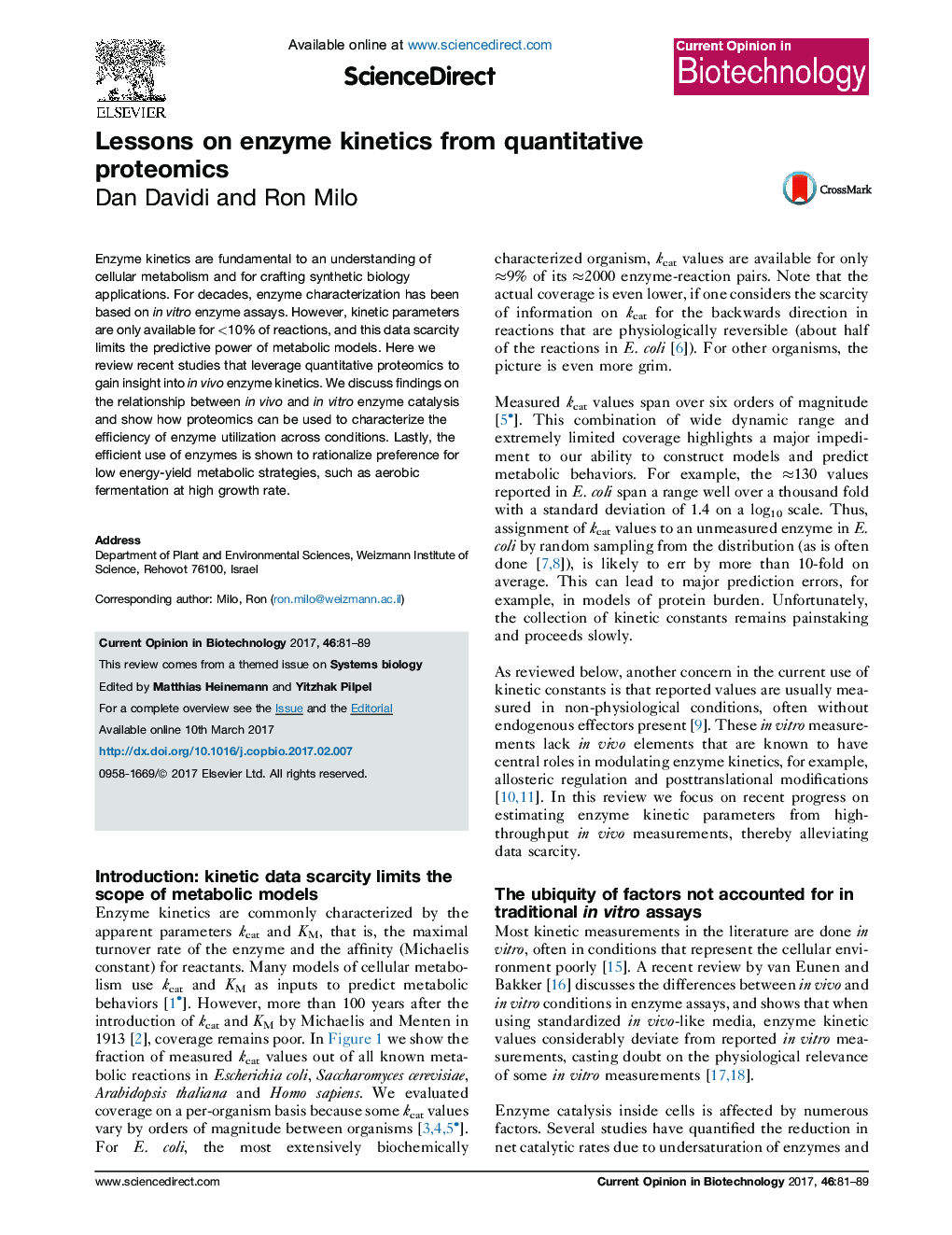| Article ID | Journal | Published Year | Pages | File Type |
|---|---|---|---|---|
| 6451441 | Current Opinion in Biotechnology | 2017 | 9 Pages |
â¢Enzyme kinetic data is sparse, limiting the predictive power of metabolic models.â¢Quantitative proteomics can give insight into in vivo enzyme kinetics.â¢In vitro kcat values and maximal in vivo catalytic rates generally concur.â¢Efficient use of enzymes rationalizes usage of low energy-yield metabolic pathways.
Enzyme kinetics are fundamental to an understanding of cellular metabolism and for crafting synthetic biology applications. For decades, enzyme characterization has been based on in vitro enzyme assays. However, kinetic parameters are only available for <10% of reactions, and this data scarcity limits the predictive power of metabolic models. Here we review recent studies that leverage quantitative proteomics to gain insight into in vivo enzyme kinetics. We discuss findings on the relationship between in vivo and in vitro enzyme catalysis and show how proteomics can be used to characterize the efficiency of enzyme utilization across conditions. Lastly, the efficient use of enzymes is shown to rationalize preference for low energy-yield metabolic strategies, such as aerobic fermentation at high growth rate.
